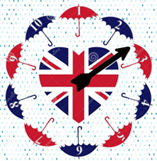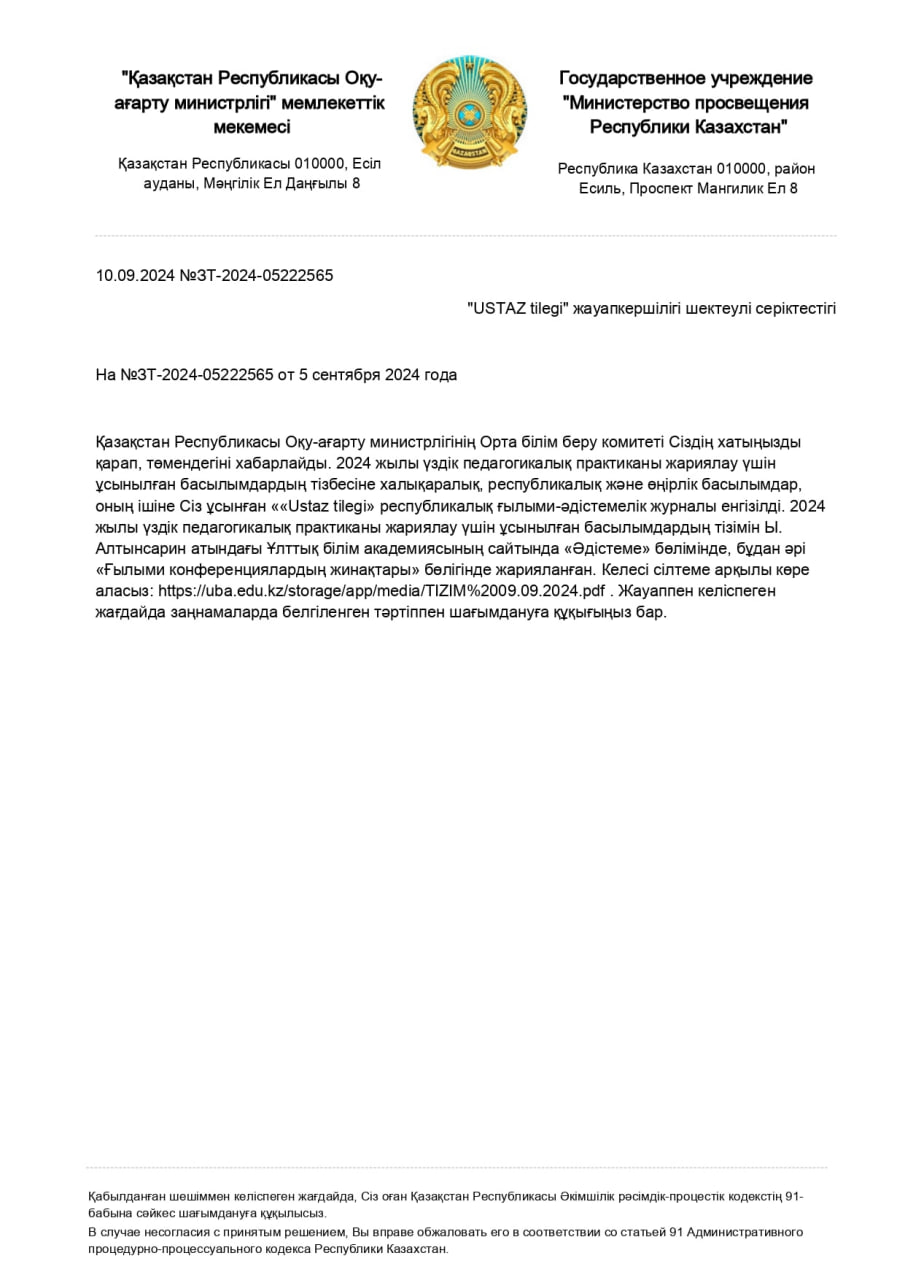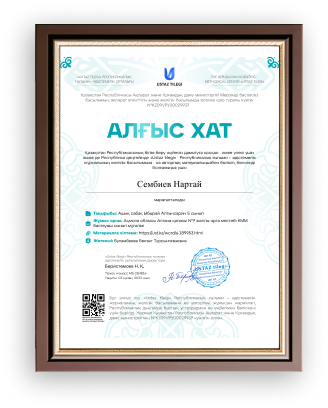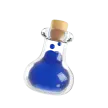
|
Unit of a long term plan: |
Reading for pleasure |
||
|
Teacher name: |
|
||
|
Date: |
|
||
|
Grade: 8 Е |
Number present: |
absent: |
|
|
Lesson title |
Language focus Second conditional |
||
|
Learning objectives |
8.6.17.1 use if / unless/ if only in second conditional clauses and wish [that] clauses [present reference]; use a growing variety of relative clauses including why clauses on a range of familiar general and curricular topics 8.5.3.1 write with moderate grammatical accuracy on a growing range of familiar general and curricular topics |
||
|
Lesson objectives |
Learners will be able to: - Learn the form and use of the second conditional. - Practise using the second conditional to talk about imaginary situations. |
||
|
Value links |
"Law and Order" Observance of norms and rules of order and justice understand the need |
||
|
Plan |
|||
|
Stages / Time |
Teachers actions |
Students actions |
Assessment criteria |
Resources |
|
|
Beginning of the lesson 8 min |
Organization moment 1.Greeting. Warm-up. Throwing the ball. The teacher throws the ball to each student. The student who catches the ball will say a sentence with the modal verb “can, could, will be able to”. Ask students to read the sentences on the board. Question: What topic will we study? |
“How are you?” method helps to start the lesson in a good mood. The aim: To develop Ss speaking skills and create friendly atmosphere Efficiency: By asking the mood they show their appreciations . The students are divided into 2 groups
Learners read the given sentences on the board and guess the topic and share with their ideas. |
At the organization moment T tries to award active Ss. «The praise» method is used to evaluate Ss with phrases like: “Good job! Well done!” Do homework 2 points |
Flower PPT |
|
|
Middle of the lesson Presentation part. 7 min 7 min 5 min 3 min 5 min |
Lead – In Teacher say the theme of the todays lesson. Today, we are hoing to study second conditional. And teacher explain the rules gives some examples. Ex: 1 p:61 Teacher explains the task to read the examples in the table with the class. In a weaker class, once the rules have been completed and checked, demonstrate the structure of the second conditional example sentences with reference to the rules. Ex: 2 P: 61 • Students work in pairs, teacher explains the task Ss to read the sentences carefully to ensure they understand the context before they choose which verb form to use in each gap. Students complete the sentences with the correct form of the verbs. Tell students to use the table in exercise 1 to help them. Differentiation: Modelling- teacher gives clear description of the task with examples Refreshment moment Ex: 3 p:61 Group task. The teacher asks the whole class to do one or two examples. Students write questions in groups. Two groups of students check each other's answers. Ask some students to write their answers on the board. In a weaker class, correct mistakes as a class. In a stronger class, encourage students to correct the sentences individually first, then ask one or two students to correct the sentences on the board |
The teacher tells the topic of today's lesson. Today we plan to study the second conditional. And the teacher explains the rules and gives some examples. Students complete the second conditional sentences with the words in the box. ANSWERS : 1 did 2 had 3 would 4 ’d 5 wouldn’t Rules 2 past simple 3 would, wouldn’t Students complete the sentences with the second conditional form of the verbs in brackets ANSWERS: 1 ’d enjoy; liked 4 would be; changed 2 had; wouldn’t believe 5 wouldn’t be; didn’t go 3 wouldn’t watch; hated 6 bought; ’d come Sing a song “Conditionals?” Students write questions using second conditional ANSWERS: 1 What would you do if you became invisible? 2 If you had a time machine, where would you go? 3 If you went to the past, who would you meet? 4 If you had a special power, what would it be? 5 If you were a superhero, would you tell your friends? 6 Would you love a person if you discovered he or she was a vampire? Students’ own answers. |
Descriptor: - complete the second conditional sentences with the words in the box. Point: 2 Descriptor: - complete the second conditional sentences -use the words in the box. Point: 3
Descriptor: - write questions - use second conditional Point: 3 -Make CCQ questions Yes / No |
Led screen
Cards Student’s book Worksheets Worksheets |
|
|
End of the lesson 5 min |
Ss use their smiles to show their knowledge according to the lesson Giving the hometask Home task: Ex: 4 p:61 |
Reflection: I understood I have some questions I need a help. |
Students use their smiles to show their knowledge according to the lesson. |
Poster Success
|
|
жүктеу мүмкіндігіне ие боласыз
Бұл материал сайт қолданушысы жариялаған. Материалдың ішінде жазылған барлық ақпаратқа жауапкершілікті жариялаған қолданушы жауап береді. Ұстаз тілегі тек ақпаратты таратуға қолдау көрсетеді. Егер материал сіздің авторлық құқығыңызды бұзған болса немесе басқа да себептермен сайттан өшіру керек деп ойласаңыз осында жазыңыз
Open lesson "Language focus Second conditional"
Open lesson "Language focus Second conditional"
|
Unit of a long term plan: |
Reading for pleasure |
||
|
Teacher name: |
|
||
|
Date: |
|
||
|
Grade: 8 Е |
Number present: |
absent: |
|
|
Lesson title |
Language focus Second conditional |
||
|
Learning objectives |
8.6.17.1 use if / unless/ if only in second conditional clauses and wish [that] clauses [present reference]; use a growing variety of relative clauses including why clauses on a range of familiar general and curricular topics 8.5.3.1 write with moderate grammatical accuracy on a growing range of familiar general and curricular topics |
||
|
Lesson objectives |
Learners will be able to: - Learn the form and use of the second conditional. - Practise using the second conditional to talk about imaginary situations. |
||
|
Value links |
"Law and Order" Observance of norms and rules of order and justice understand the need |
||
|
Plan |
|||
|
Stages / Time |
Teachers actions |
Students actions |
Assessment criteria |
Resources |
|
|
Beginning of the lesson 8 min |
Organization moment 1.Greeting. Warm-up. Throwing the ball. The teacher throws the ball to each student. The student who catches the ball will say a sentence with the modal verb “can, could, will be able to”. Ask students to read the sentences on the board. Question: What topic will we study? |
“How are you?” method helps to start the lesson in a good mood. The aim: To develop Ss speaking skills and create friendly atmosphere Efficiency: By asking the mood they show their appreciations . The students are divided into 2 groups
Learners read the given sentences on the board and guess the topic and share with their ideas. |
At the organization moment T tries to award active Ss. «The praise» method is used to evaluate Ss with phrases like: “Good job! Well done!” Do homework 2 points |
Flower PPT |
|
|
Middle of the lesson Presentation part. 7 min 7 min 5 min 3 min 5 min |
Lead – In Teacher say the theme of the todays lesson. Today, we are hoing to study second conditional. And teacher explain the rules gives some examples. Ex: 1 p:61 Teacher explains the task to read the examples in the table with the class. In a weaker class, once the rules have been completed and checked, demonstrate the structure of the second conditional example sentences with reference to the rules. Ex: 2 P: 61 • Students work in pairs, teacher explains the task Ss to read the sentences carefully to ensure they understand the context before they choose which verb form to use in each gap. Students complete the sentences with the correct form of the verbs. Tell students to use the table in exercise 1 to help them. Differentiation: Modelling- teacher gives clear description of the task with examples Refreshment moment Ex: 3 p:61 Group task. The teacher asks the whole class to do one or two examples. Students write questions in groups. Two groups of students check each other's answers. Ask some students to write their answers on the board. In a weaker class, correct mistakes as a class. In a stronger class, encourage students to correct the sentences individually first, then ask one or two students to correct the sentences on the board |
The teacher tells the topic of today's lesson. Today we plan to study the second conditional. And the teacher explains the rules and gives some examples. Students complete the second conditional sentences with the words in the box. ANSWERS : 1 did 2 had 3 would 4 ’d 5 wouldn’t Rules 2 past simple 3 would, wouldn’t Students complete the sentences with the second conditional form of the verbs in brackets ANSWERS: 1 ’d enjoy; liked 4 would be; changed 2 had; wouldn’t believe 5 wouldn’t be; didn’t go 3 wouldn’t watch; hated 6 bought; ’d come Sing a song “Conditionals?” Students write questions using second conditional ANSWERS: 1 What would you do if you became invisible? 2 If you had a time machine, where would you go? 3 If you went to the past, who would you meet? 4 If you had a special power, what would it be? 5 If you were a superhero, would you tell your friends? 6 Would you love a person if you discovered he or she was a vampire? Students’ own answers. |
Descriptor: - complete the second conditional sentences with the words in the box. Point: 2 Descriptor: - complete the second conditional sentences -use the words in the box. Point: 3
Descriptor: - write questions - use second conditional Point: 3 -Make CCQ questions Yes / No |
Led screen
Cards Student’s book Worksheets Worksheets |
|
|
End of the lesson 5 min |
Ss use their smiles to show their knowledge according to the lesson Giving the hometask Home task: Ex: 4 p:61 |
Reflection: I understood I have some questions I need a help. |
Students use their smiles to show their knowledge according to the lesson. |
Poster Success
|
|

шағым қалдыра аласыз


















